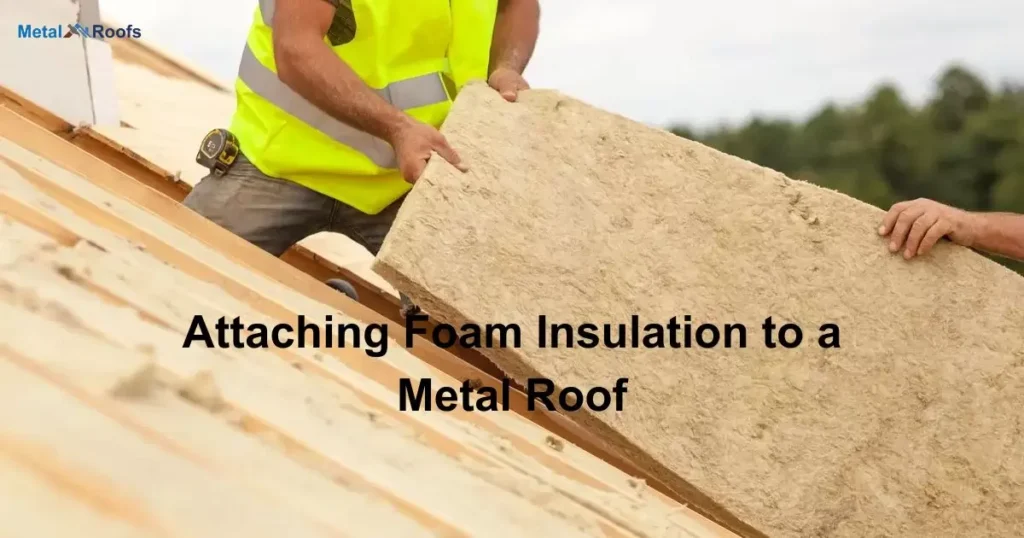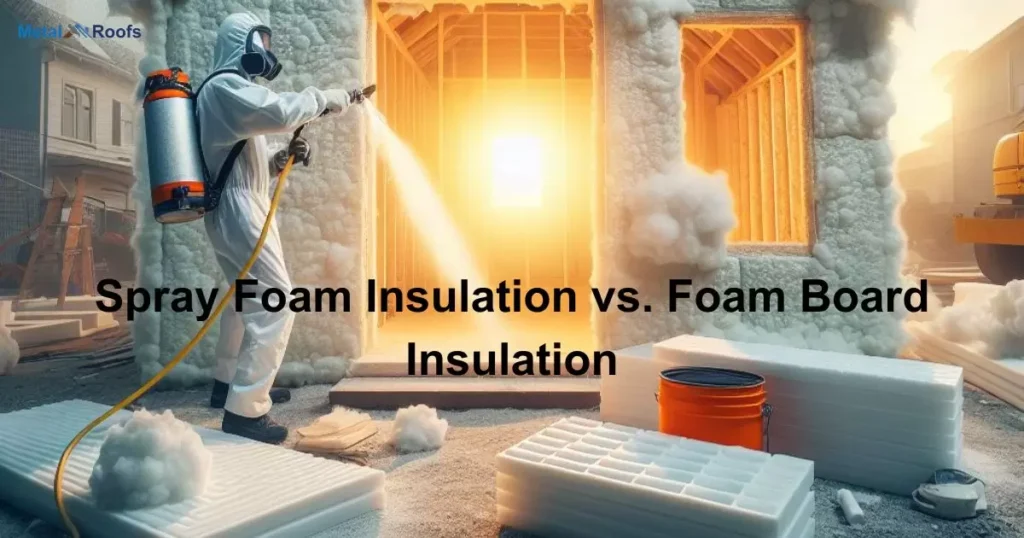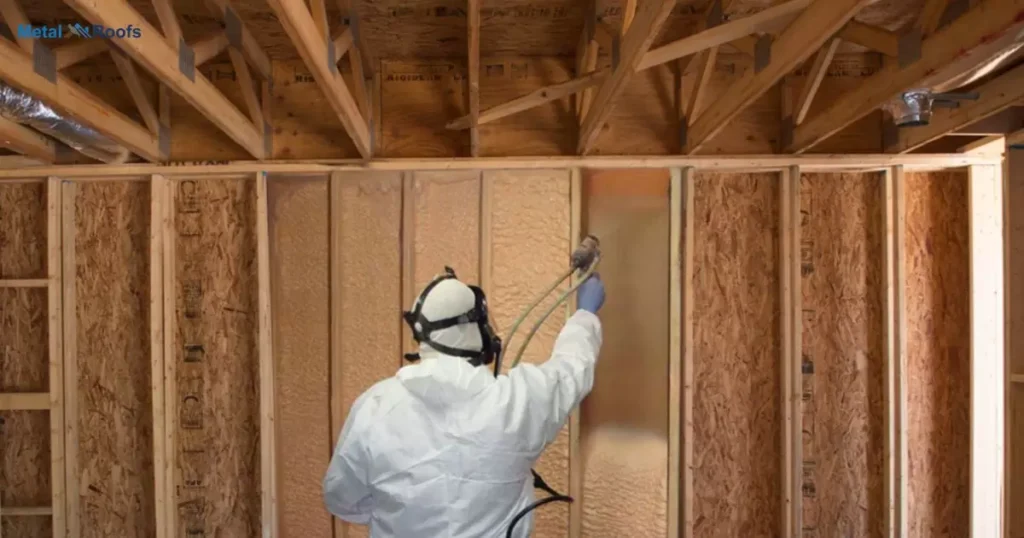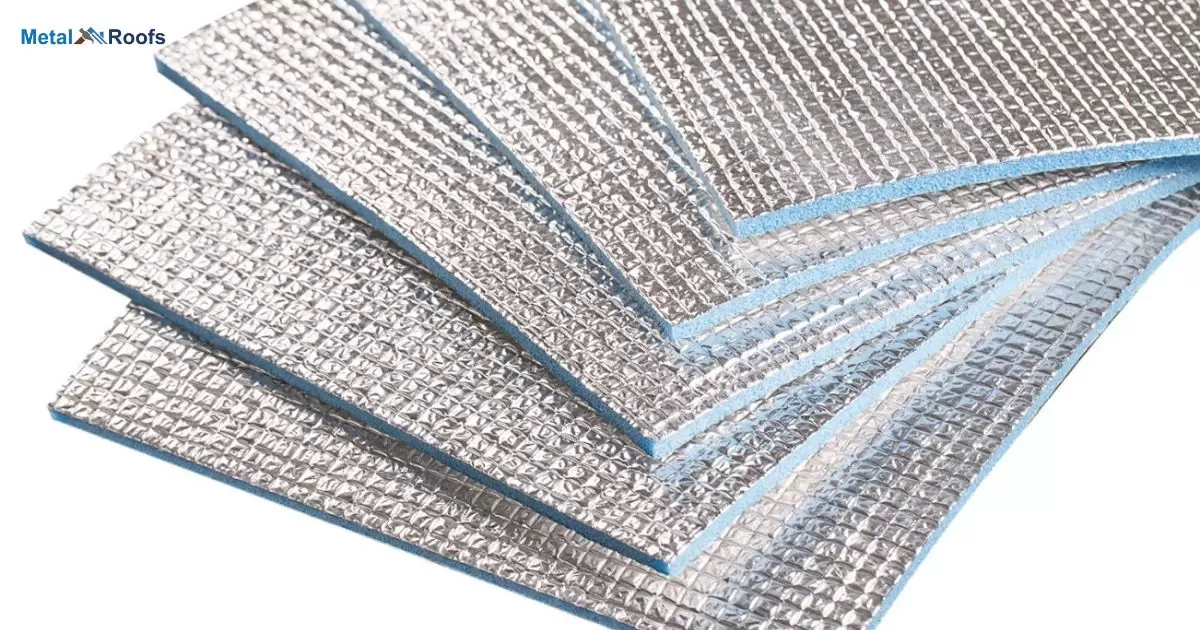Insulation underneath a metallic roof maintains your property cozy. It stops warmness from escaping in wintry weather and continues it out in summer time. It’s like a cushty blanket for your property, saving strength and making your area comfortable all 12 months round.
Keep your own home comfy yr-spherical with insulation beneath your metallic roof. Save energy, stay snug, and experience a snug residing area. Insulation is your secret weapon in opposition to severe temperatures, making your own home feel just proper.
Foam board insulation can be attached to a metal roof using specialized adhesives or fastening methods, helping regulate indoor temperatures for a comfortable environment year-round.
Key Takeaways
- Insulation under a metal roof is crucial for energy efficiency and comfort.
- Different types of insulation, like foam and fiberglass, offer varying benefits.
- Proper insulation installation requires specific tools and equipment for effectiveness.
- Spray foam insulation provides excellent air sealing and moisture protection.
- Insulation should not touch metal directly to prevent condensation issues.
Types of Insulation for Metal Roofs
Fiberglass batt insulation: Easy to install and offers good thermal performance.
Rigid foam board insulation: High R-value and moisture resistance.
Spray foam insulation: Provides air sealing and insulation in one application.
Reflective insulation (radiant barriers): Reflects heat away, keeping interiors cooler.
Choice depends on factors like climate, budget, and desired energy efficiency.
Benefits of Installing 1 Inch Foam Insulation Under a Metal Roof

Installing 1-inch foam insulation under a metal roof can offer several benefits, both in terms of energy efficiency and overall building performance. Here are some key advantages:
Improved Energy Efficiency: Foam insulation helps to reduce heat transfer, keeping your building cooler in the summer and warmer in the winter. This can lead to lower energy bills as your heating and cooling systems won’t have to work as hard to maintain a comfortable indoor temperature.
Condensation Prevention: Metal roofs can be prone to condensation buildup, especially in humid climates or during temperature changes. The foam insulation acts as a barrier, reducing the likelihood of condensation forming on the underside of the roof. This helps prevent moisture-related issues such as mold, mildew, and rot.
Noise Reduction: Metal roofs can be noisy during heavy rain or hailstorms. The foam insulation can help dampen the sound transmission, making the interior of the building quieter and more comfortable.
Improved Comfort: Insulating the roof can create a more consistent indoor temperature, reducing hot spots in the summer and cold drafts in the winter. This can enhance the overall comfort of the building for occupants.
Potential for Rebates and Incentives: In many regions, there are incentives, rebates, or tax credits available for improving the energy efficiency of buildings. Installing insulation under a metal roof could make you eligible for these financial benefits, further offsetting the initial investment.
Installing 1-inch foam insulation under a metal roof can provide long-term benefits in terms of energy savings, comfort, durability, and environmental impact. It’s an investment that can pay off both financially and in terms of improved building performance.
Tools and Equipment for Installing Foam Insulation
Foam insulation spray kit: Includes a spray gun, hoses, and nozzles for applying foam insulation.
Protective gear: Safety goggles, gloves, and a respirator to protect against foam fumes.
Utility knife: Used for cutting foam boards to fit the installation area.
Measuring tape: Ensures accurate measurements for cutting and fitting insulation.
Foam board cutter or saw: Helps cut rigid foam boards cleanly and accurately.
Adhesive: Used to secure foam boards in place before applying foam insulation.
Sealant: Helps seal gaps and joints between insulation panels for better air sealing.
Extension ladder or scaffolding: Required for reaching high or elevated areas during installation.
Foam insulation removal tools: For removing old insulation before installing new foam insulation.
Cleanup supplies: Rags, solvent, and trash bags for cleaning up excess foam and materials after installation.
Measuring and Cutting Foam Insulation
To measure foam insulation, use a measuring tape for accuracy. Mark the desired measurements on the insulation material. Then, cut along the marked lines using a sharp utility knife.
Ensure straight cuts for a snug fit during installation. Measure twice and cut once to avoid waste. Precise cutting helps optimize insulation effectiveness and installation efficiency.
Attaching Foam Insulation to a Metal Roof

Attaching foam insulation to a metal roof requires specific tools and techniques. First, measure and cut the insulation boards to fit the roof’s dimensions accurately. Next, use adhesive or mechanical fasteners like screws to secure the insulation in place.
Once the insulation is attached, seal any gaps or joints with sealant for optimal air sealing. Properly attaching foam insulation ensures energy efficiency and a comfortable indoor environment.
Moisture Damage Prevention
Preventing moisture damage is crucial for maintaining a healthy home environment. Start by fixing leaks and ensuring proper ventilation to reduce humidity levels. Regularly inspect and maintain gutters, downspouts, and roof flashing to prevent water infiltration.
Use moisture barriers and sealants in vulnerable areas like basements and crawl spaces. Keep indoor humidity levels between 30-50% and address any signs of moisture promptly. These simple steps can help prevent costly damage and maintain your home’s structural integrity.
Sealing Seams and Joints
Sealing seams and joints is crucial for effective insulation. Use sealant to fill gaps and ensure airtightness, preventing heat loss or gain. Proper sealing also helps in reducing energy costs and maintaining a comfortable indoor environment.
Inspect seams and joints regularly for any signs of wear or damage. Repair any leaks promptly to maximize the efficiency of your insulation. Taking these simple steps ensures long-lasting insulation performance and saves you money on heating and cooling bills.
Cost of Foam Insulation
| Type of Foam Insulation | Cost per Square Foot (USD) | Description |
| Spray Foam Insulation | $1.50 – $3.50 | Applied as a liquid that expands and hardens into a solid foam. Offers high R-values per inch. |
| Foam Board Insulation | Varies | Comes in rigid panels, cost depends on the type (XPS, EPS, polyiso) and thickness. |
Foam insulation costs vary based on factors like insulation type and area size. Generally, it ranges from $1.50 to $3.50 per square foot for installation. This cost includes materials, labor, and equipment needed for the insulation project.
Spray Foam Insulation vs. Foam Board Insulation

Here are the main points about spray foam insulation and foam board insulation:
Spray Foam Insulation:
- Applied as a liquid that expands and hardens into a solid foam.
- Offers high R-values per inch and excellent air sealing properties.
- Effective at filling gaps and irregular spaces, providing a seamless barrier against air infiltration.
- Typically installed by professionals, leading to higher upfront costs.
Foam Board Insulation:
- Comes in rigid panels that are cut to fit and installed manually.
- Offers good insulation but may require additional air sealing at joints and edges.
- Generally less expensive upfront, especially for DIY installations.
- Different types such as XPS, EPS, and polyiso have varying R-values and moisture resistance.
- Consider factors like budget, insulation needs, installation expertise, and moisture control when choosing between spray foam and foam board insulation.
R-Value and Climate Considerations
When considering R-value for insulation, think about your climate. Colder climates need higher R-values for better insulation.
Warmer regions can benefit from lower R-values to maintain comfortable temperatures. Adjusting insulation based on climate ensures energy efficiency and comfort year-round.
Vapor Barrier and Condensation Prevention
A vapor barrier is crucial for preventing condensation in buildings. It acts as a barrier to moisture, reducing the risk of mold and structural damage. Proper installation of vapor barriers helps maintain a healthy and comfortable indoor environment.
Condensation prevention is essential to avoid moisture-related issues. Insulation, ventilation, and sealing gaps can all contribute to effective condensation control. By addressing these factors, you can protect your property from potential damage and maintain optimal indoor air quality.
Spray Foam Under Metal Roof

Spray foam under a metal roof is an effective insulation option. It provides seamless coverage, filling gaps and cracks for optimal insulation. This helps regulate indoor temperatures and improves energy efficiency.
Spray foam acts as a moisture barrier, preventing water damage. It also enhances the structural integrity of the roof, reducing the risk of leaks and extending its lifespan. Overall, spray foam is a reliable choice for enhancing comfort and protecting your home.
Frequently Asked Questions
Can I put foam insulation under the metal roof?
Yes, you can put foam insulation under a metal roof for improved thermal performance.
Do you need an air gap under a metal roof?
No, an air gap is not necessary under a metal roof.
Can insulation touch metal roofs?
Yes, insulation can touch metal roofs directly without any issues.
Conclusion
Insulation below a metal roof is important for maintaining a snug home environment. It preserves energy through stopping warmth loss in winter and warmth advantage in summer. This now not most effectively reduces utility payments however also contributes to an extra sustainable way of life.
Proper insulation improves the overall sturdiness of your roof by minimizing temperature-associated strain. It protects against moisture buildup that may cause mold and structural harm over time. Investing in quality insulation is a clever preference for lengthy-time period consolation, strength performance, and home renovation.











